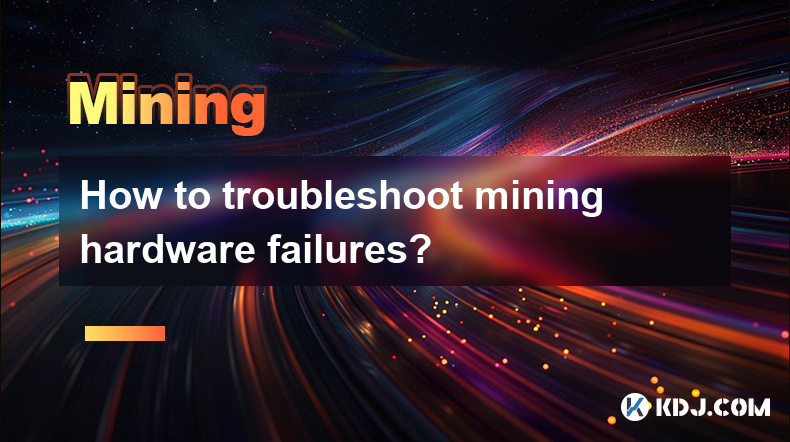-
 Bitcoin
Bitcoin $84,412.2676
-0.67% -
 Ethereum
Ethereum $1,578.6729
-0.92% -
 Tether USDt
Tether USDt $0.9997
-0.03% -
 XRP
XRP $2.0641
-1.56% -
 BNB
BNB $590.2565
1.09% -
 Solana
Solana $133.1528
3.43% -
 USDC
USDC $1.0000
0.01% -
 TRON
TRON $0.2486
-2.49% -
 Dogecoin
Dogecoin $0.1551
-0.16% -
 Cardano
Cardano $0.6195
1.38% -
 UNUS SED LEO
UNUS SED LEO $9.0448
-3.89% -
 Chainlink
Chainlink $12.4389
0.95% -
 Avalanche
Avalanche $19.1160
0.32% -
 Toncoin
Toncoin $2.9801
3.00% -
 Stellar
Stellar $0.2386
1.48% -
 Shiba Inu
Shiba Inu $0.0...01174
-0.95% -
 Sui
Sui $2.1028
0.11% -
 Hedera
Hedera $0.1609
1.18% -
 Bitcoin Cash
Bitcoin Cash $334.5478
3.76% -
 Polkadot
Polkadot $3.6383
2.11% -
 Litecoin
Litecoin $75.0599
-0.04% -
 Hyperliquid
Hyperliquid $16.5153
3.75% -
 Dai
Dai $1.0001
0.01% -
 Bitget Token
Bitget Token $4.3581
0.06% -
 Ethena USDe
Ethena USDe $0.9991
0.00% -
 Pi
Pi $0.6183
-0.05% -
 Monero
Monero $216.0344
-1.40% -
 Uniswap
Uniswap $5.1688
-0.28% -
 OKB
OKB $50.4625
-2.46% -
 Pepe
Pepe $0.0...07178
0.05%
How to troubleshoot mining hardware failures?
Troubleshooting mining hardware failures requires a systematic approach: check power, cables, and physical integrity; update software and verify configurations; ensure adequate cooling to prevent overheating; and perform regular maintenance for longevity.
Mar 19, 2025 at 04:21 pm

Key Points:
- Identifying the source of the failure is crucial – is it the hardware itself, the software configuration, or external factors like power supply or overheating?
- Systematic troubleshooting involves checking power connections, cables, and the physical integrity of the mining hardware.
- Software issues can be addressed by checking for updates, driver compatibility, and correct configuration settings.
- Overheating is a common problem; proper cooling solutions are essential for preventing hardware failures.
- Regular maintenance and monitoring can significantly reduce the likelihood of hardware failures.
How to Troubleshoot Mining Hardware Failures
Mining cryptocurrency requires specialized hardware that operates continuously under intense conditions. Inevitably, failures will occur. Effective troubleshooting requires a systematic approach, beginning with accurate identification of the problem. Is the issue with the hardware itself, the software controlling it, or something external like the power supply? This initial assessment guides the next steps.
First, always ensure the hardware is receiving adequate power. Check all power connections, both to the wall outlet and to the mining rig itself. Loose or damaged cables are a frequent cause of problems. Examine the power supply unit (PSU) itself; if it's failing, it can cascade problems throughout the system. Ensure the PSU is rated appropriately for the power draw of your mining hardware.
Next, inspect the physical condition of the mining hardware. Look for any visible signs of damage, such as burned components, loose connections, or physical wear and tear. Pay close attention to the cooling system – fans, heatsinks, and potentially a liquid cooling system. Dust buildup can significantly impede cooling, leading to overheating and failure. Cleaning the hardware is crucial preventative maintenance.
Software issues are another common cause of mining hardware failures. Begin by checking for firmware or driver updates. Outdated software can lead to instability and malfunction. Verify that the mining software is correctly configured, including the pool address, worker name, and other relevant settings. Incorrect configuration can result in errors and reduced efficiency, potentially leading to apparent hardware failures.
Overheating is a significant threat to mining hardware. ASIC miners, in particular, generate substantial heat during operation. Inadequate cooling can lead to performance degradation, instability, and ultimately, permanent damage. Ensure your mining rig has sufficient cooling fans and that the airflow is unobstructed. Consider using a dedicated cooling solution, such as a liquid cooling system, for more demanding setups. Monitor temperatures using dedicated monitoring software.
Addressing specific hardware components requires specialized knowledge. For example, if a GPU (Graphics Processing Unit) is failing, you might see artifacts on the screen or complete failure to initialize. ASIC miners might display error codes or simply refuse to start. In such cases, carefully examine the component's specifications and consult the manufacturer's troubleshooting guides.
Regular maintenance is key to preventing mining hardware failures. This includes regularly cleaning the hardware, monitoring temperatures, and checking power connections. Using monitoring software to track performance metrics, such as hash rate, temperature, and power consumption, allows for early detection of potential problems. Regular backups of your mining configuration are also essential.
Beyond the hardware and software, consider environmental factors. Extreme temperatures, humidity, or dust can significantly impact the longevity and performance of your mining hardware. Maintain a stable and suitable environment for your mining operation.
Common Questions and Answers:
Q: My miner keeps crashing. What should I do?
A: Systematically check power connections, cooling, software configuration, and the physical condition of the hardware. Look for error messages or logs in your mining software. Consider overheating as a primary suspect and check temperatures.
Q: One of my GPUs is showing artifacts. Is it failing?
A: Artifacts on the screen are a strong indicator of GPU failure. Try reseating the GPU, updating drivers, and checking for overheating. If the problem persists, the GPU might require replacement.
Q: My ASIC miner is displaying an error code. How can I troubleshoot it?
A: Consult the manufacturer's documentation for the specific error code. This usually provides information about the cause and potential solutions. Check power connections, cooling, and firmware.
Q: How often should I clean my mining hardware?
A: The frequency depends on your environment, but at least once a month is recommended. Dust buildup significantly impacts cooling and can lead to overheating and failures.
Q: What is the best way to monitor my mining hardware?
A: Use dedicated monitoring software that tracks key metrics such as temperature, hash rate, power consumption, and fan speed. This allows for early detection of potential problems.
Disclaimer:info@kdj.com
The information provided is not trading advice. kdj.com does not assume any responsibility for any investments made based on the information provided in this article. Cryptocurrencies are highly volatile and it is highly recommended that you invest with caution after thorough research!
If you believe that the content used on this website infringes your copyright, please contact us immediately (info@kdj.com) and we will delete it promptly.
- Former United States President Donald Trump is likely making a bold move into blockchain gaming
- 2025-04-17 23:15:12
- The TRUMP memecoin is set to unlock over $300 million worth of tokens this Saturday
- 2025-04-17 23:15:12
- Mantra Crypto (OM) Token Just Cratered, Shedding 80% of Its Value and Torching Billions in Market Cap
- 2025-04-17 23:10:12
- Chainlink (LINK) price has been under significant pressure recently, with a notable decline over the past three weeks.
- 2025-04-17 23:10:12
- Pi Network Price Prediction: Will the Pi Token Reach $30 If Banks Adopt It?
- 2025-04-17 23:05:12
- Ultra-rare coins with royal connection could be worth small fortune
- 2025-04-17 23:05:12
Related knowledge

How to deal with abnormal noise during mining machine operation?
Apr 17,2025 at 01:35am
Mining machines are essential tools for cryptocurrency miners, but they can sometimes produce abnormal noises that may indicate underlying issues. Understanding how to identify and address these noises is crucial for maintaining the efficiency and longevity of your mining equipment. This article will guide you through the process of dealing with abnorma...

How to maintain anonymity when mining?
Apr 17,2025 at 06:01pm
Maintaining anonymity when mining cryptocurrencies is crucial for many miners who wish to protect their privacy and security. This article will guide you through various strategies and tools that can help you achieve a high level of anonymity while engaging in mining activities. Understanding the Importance of Anonymity in MiningAnonymity in the context...

How to increase income through merged mining?
Apr 17,2025 at 09:22am
Merged mining is a technique that allows miners to mine more than one cryptocurrency at the same time, using the same computational resources. This method can significantly increase income for miners by maximizing the efficiency of their hardware and reducing the overall cost per hash. In this article, we will explore the concept of merged mining, its b...

How to optimize mining machine performance through BIOS settings?
Apr 17,2025 at 08:07pm
Optimizing the performance of a mining machine through BIOS settings can significantly enhance its efficiency and profitability. The BIOS, or Basic Input/Output System, is the firmware that controls the basic functions of your computer and provides runtime services for operating systems and programs. By tweaking certain settings within the BIOS, miners ...

How to deploy mining programs under Linux system?
Apr 17,2025 at 09:57am
Deploying mining programs under a Linux system can be a rewarding endeavor for those interested in cryptocurrency mining. This process involves several steps, from setting up the environment to running the mining software. In this article, we will guide you through the detailed process of deploying mining programs on a Linux system, ensuring you have al...

How to avoid IP blocking or restriction during mining?
Apr 16,2025 at 09:36pm
Mining cryptocurrency is an exciting venture that can yield significant rewards, but it can also come with its own set of challenges. One of these challenges is IP blocking or restriction, which can hinder your mining activities. In this article, we will explore various strategies to avoid IP blocking or restriction during mining, ensuring that you can ...

How to deal with abnormal noise during mining machine operation?
Apr 17,2025 at 01:35am
Mining machines are essential tools for cryptocurrency miners, but they can sometimes produce abnormal noises that may indicate underlying issues. Understanding how to identify and address these noises is crucial for maintaining the efficiency and longevity of your mining equipment. This article will guide you through the process of dealing with abnorma...

How to maintain anonymity when mining?
Apr 17,2025 at 06:01pm
Maintaining anonymity when mining cryptocurrencies is crucial for many miners who wish to protect their privacy and security. This article will guide you through various strategies and tools that can help you achieve a high level of anonymity while engaging in mining activities. Understanding the Importance of Anonymity in MiningAnonymity in the context...

How to increase income through merged mining?
Apr 17,2025 at 09:22am
Merged mining is a technique that allows miners to mine more than one cryptocurrency at the same time, using the same computational resources. This method can significantly increase income for miners by maximizing the efficiency of their hardware and reducing the overall cost per hash. In this article, we will explore the concept of merged mining, its b...

How to optimize mining machine performance through BIOS settings?
Apr 17,2025 at 08:07pm
Optimizing the performance of a mining machine through BIOS settings can significantly enhance its efficiency and profitability. The BIOS, or Basic Input/Output System, is the firmware that controls the basic functions of your computer and provides runtime services for operating systems and programs. By tweaking certain settings within the BIOS, miners ...

How to deploy mining programs under Linux system?
Apr 17,2025 at 09:57am
Deploying mining programs under a Linux system can be a rewarding endeavor for those interested in cryptocurrency mining. This process involves several steps, from setting up the environment to running the mining software. In this article, we will guide you through the detailed process of deploying mining programs on a Linux system, ensuring you have al...

How to avoid IP blocking or restriction during mining?
Apr 16,2025 at 09:36pm
Mining cryptocurrency is an exciting venture that can yield significant rewards, but it can also come with its own set of challenges. One of these challenges is IP blocking or restriction, which can hinder your mining activities. In this article, we will explore various strategies to avoid IP blocking or restriction during mining, ensuring that you can ...
See all articles























































































